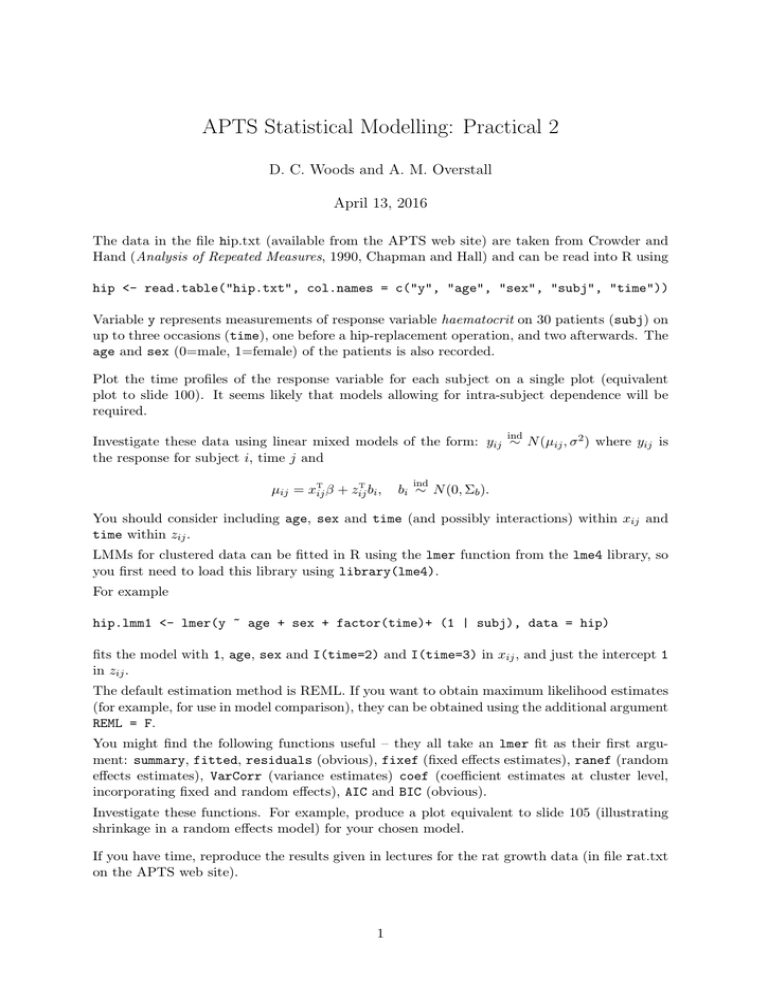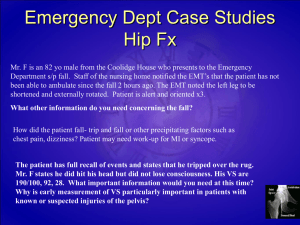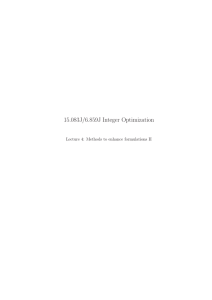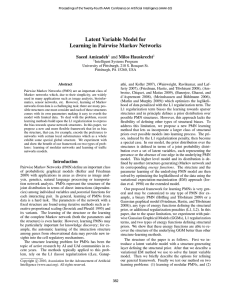APTS Statistical Modelling: Practical 2 April 13, 2016
advertisement

APTS Statistical Modelling: Practical 2 D. C. Woods and A. M. Overstall April 13, 2016 The data in the file hip.txt (available from the APTS web site) are taken from Crowder and Hand (Analysis of Repeated Measures, 1990, Chapman and Hall) and can be read into R using hip <- read.table("hip.txt", col.names = c("y", "age", "sex", "subj", "time")) Variable y represents measurements of response variable haematocrit on 30 patients (subj) on up to three occasions (time), one before a hip-replacement operation, and two afterwards. The age and sex (0=male, 1=female) of the patients is also recorded. Plot the time profiles of the response variable for each subject on a single plot (equivalent plot to slide 100). It seems likely that models allowing for intra-subject dependence will be required. ind Investigate these data using linear mixed models of the form: yij ∼ N (µij , σ 2 ) where yij is the response for subject i, time j and T µij = xTij β + zij bi , ind bi ∼ N (0, Σb ). You should consider including age, sex and time (and possibly interactions) within xij and time within zij . LMMs for clustered data can be fitted in R using the lmer function from the lme4 library, so you first need to load this library using library(lme4). For example hip.lmm1 <- lmer(y ~ age + sex + factor(time)+ (1 | subj), data = hip) fits the model with 1, age, sex and I(time=2) and I(time=3) in xij , and just the intercept 1 in zij . The default estimation method is REML. If you want to obtain maximum likelihood estimates (for example, for use in model comparison), they can be obtained using the additional argument REML = F. You might find the following functions useful – they all take an lmer fit as their first argument: summary, fitted, residuals (obvious), fixef (fixed effects estimates), ranef (random effects estimates), VarCorr (variance estimates) coef (coefficient estimates at cluster level, incorporating fixed and random effects), AIC and BIC (obvious). Investigate these functions. For example, produce a plot equivalent to slide 105 (illustrating shrinkage in a random effects model) for your chosen model. If you have time, reproduce the results given in lectures for the rat growth data (in file rat.txt on the APTS web site). 1










